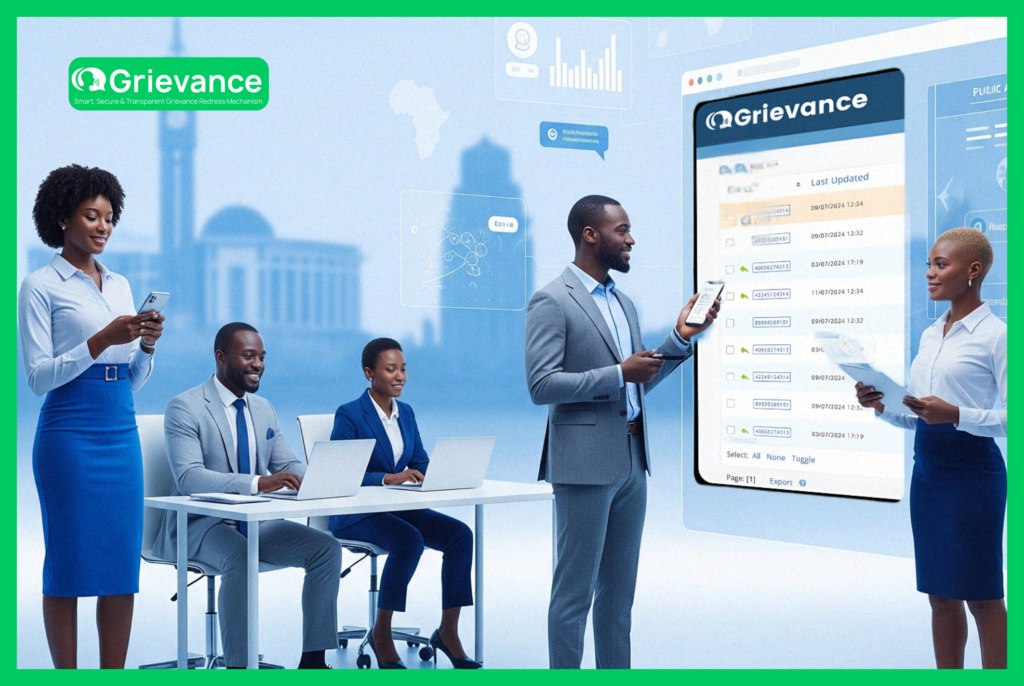Public Grievance: 5 Common Mistakes to Avoid in the Handling of Public Grievances

In today’s governance and public service delivery landscape, the effective handling of public grievances is no longer a luxury; it is a necessity. Whether you’re a government ministry, a local municipality, or a development agency operating in Africa, mismanaging citizen complaints can erode trust, trigger social friction, and slow down service improvement. Yet many institutions continue to make avoidable mistakes that hinder resolution and transparency.
This article unpacks five of the most common errors in public grievance handling. Backed by insights from Grievance App, an advanced digital platform dedicated to grievance redress, you’ll learn how to transform your complaint management process into a tool for engagement, accountability, and credibility.
1. Failing to Recognize and Log Grievances Promptly
One of the earliest and most damaging mistakes is the delayed recognition or registration of grievances. When complaints go unacknowledged or unlogged:
- Citizens feel ignored, which diminishes public confidence.
- Problems go unresolved and may escalate into serious issues.
Tools That Improve the Handling of Public Grievances in Real Time:
- Enable multi-channel complaint submission (web, mobile, physical kiosks).
- Offer anonymous and multilingual options to reduce reporting barriers.
- Implement automatic timestamping, as Grievance App does, to ensure traceability.
2. Skipping Acknowledgment and Progress Tracking
Acknowledging a complaint formally is not optional—it’s essential.
Without it:
- Complainants are left in the dark.
- Institutions spend more time answering follow-ups than solving issues.
Best Practices for Transparent Handling of Public Grievances:
- Send automated confirmations with a unique tracking ID.
- Allow real-time status checks via a public portal or SMS.
- Use automatic reminders and escalation chains to prevent stagnation features natively embedded in the Grievance App.
3. Conducting Superficial Investigations
Jumping to conclusions without a full investigation weakens the process and increases the risk of bias.
Common pitfalls include:
- Rushing to resolve complaints without hearing all parties.
- Neglecting supporting evidence or documentation.
Recommended actions:
- Assign neutral case managers for objective investigations.
- Collect information from all relevant stakeholders.
- Use AI-powered categorization (as offered by Grievance App) to streamline, but not replace, human oversight.
4. Poor Communication Throughout the Resolution Process
When citizens don’t receive updates or clear explanations, trust erodes, even if the case is resolved fairly.
Matters in the Handling of Public Grievances:
- Issuing vague or overly technical responses.
- Closing complaints without offering reasoning or next steps.
What to do instead:
- Provide clear, human-readable responses supported by facts.
- Use standardized resolution templates to maintain consistency.
- Create a channel for follow-up questions or appeals.
5. Delays and Absence of Escalation Procedures
Delays are the most cited cause of dissatisfaction in grievance systems.
The risks:
- Citizens perceive neglect or indifference.
- Media or political pressure may escalate unresolved complaints.
Effective strategies:
- Set service-level agreements (SLAs) with fixed resolution timeframes.
- Integrate automated reminders and escalation rules.
- Monitor team performance using dashboards and KPIs, something Grievance App supports with precision.
How Grievance App Enhances Public Grievance Handling
Grievance App is purpose-built to solve exactly these challenges. It delivers:
- Multilingual, anonymous, multi-channel complaint submission.
- Real-time tracking with performance dashboards.
- AI-based categorization and intelligent escalation workflows.
- Secure access control and audit trails.
- Customizable interfaces and accessibility features.
- Compliance with global standards (GDPR, SLA, etc.).
With Grievance App, public institutions don’t just manage complaints, they build trust and improve public service outcomes.
Conclusion
If you’re looking to streamline your grievance process and boost stakeholder satisfaction, it’s time to act.
👉 Request a free demo of Grievance App today and see how you can modernize your grievance redress mechanism with confidence.
FAQ – Handling of Public Grievances
1. What is the best platform for handling public grievances in government?
Platforms like Grievance App are designed for public sector institutions, offering secure, real-time complaint management, tracking, and analytics.
2. Why is formal acknowledgment of grievances important?
Acknowledgment builds trust. It confirms receipt and gives citizens confidence that their issues are being taken seriously.
3. What timelines should be set for grievance resolution?
Most effective institutions use SLA-based deadlines (e.g., 5 to 15 working days), with automatic escalation for unresolved cases.
4. How can AI improve the grievance management process?
AI helps categorize and prioritize grievances quickly, recommend resolutions based on previous cases, and flag urgent issues, while human teams remain in control.
5. What are the key features of a strong GRM system?
The essentials include:
- Multilingual & multi-channel access
- Real-time tracking
- Escalation workflows
- Secure user roles
- KPI dashboards
